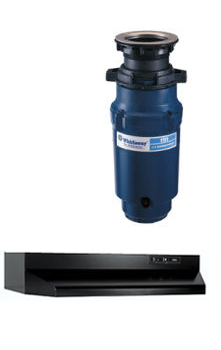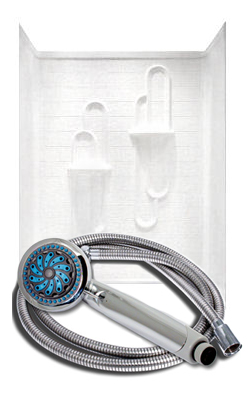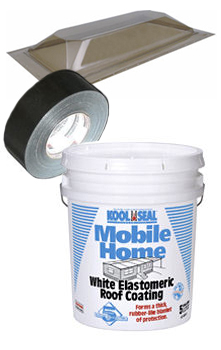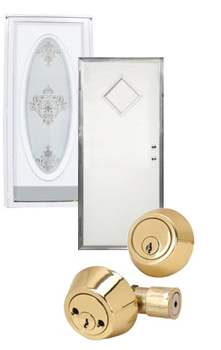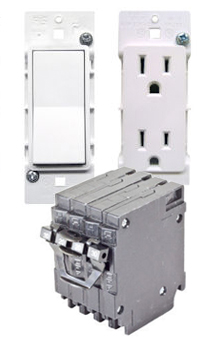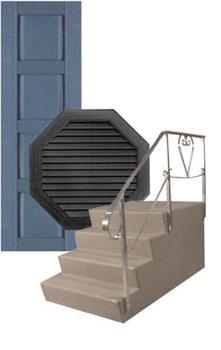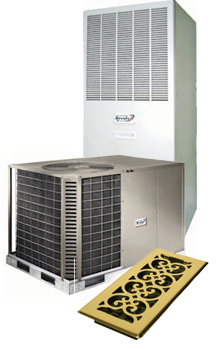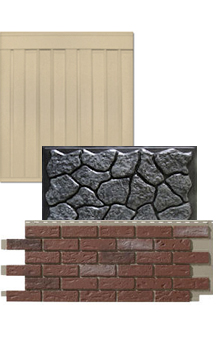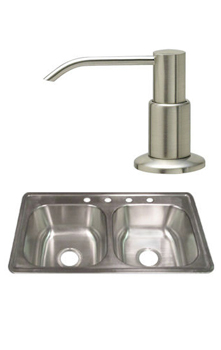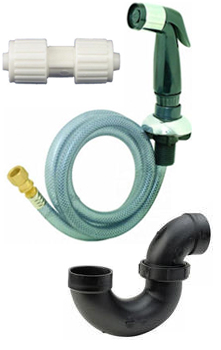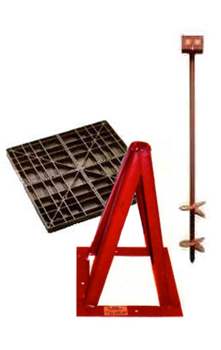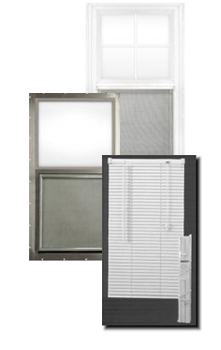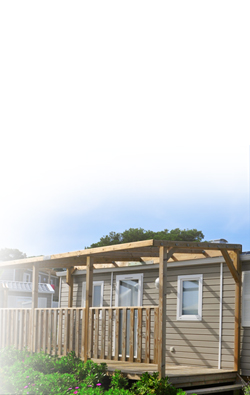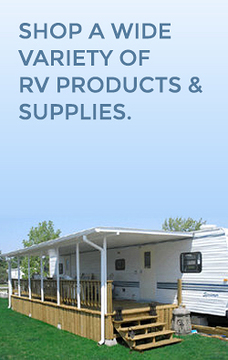
It’s not uncommon for mobile homeowners to pine for more space— an extra room, porch, or even a larger entertainment space in their current home. After all, your home is where you spend most of your time, and it’s only natural to want to be as comfortable as possible. If this is the case, it might be time to consider an addition to your mobile home. In this article, we will cover the advantages and disadvantages of mobile home additions and the basics of building.
Why Should You Upgrade Your Mobile Home?
The number of reasons why someone might want to improve upon or expand their mobile home is seemingly endless. Mobile home renovations of any type are both exciting and nerve-wracking. The possibilities are thrilling, yet many critical factors must be considered when adding to a mobile home. To start, let’s examine some of the reasons why homeowners seek to put additions to their homes.
Size
After obtaining a mobile home, people start considering how to enlarge the area and add some space. For example, many homeowners have considered increasing their mobile home’s square footage with a bedroom or even a porch to make them more spacious. Whether that is because the family or occupants have grown and require more room or are interested in making their homes feel less crowded.
Location
Another reason for mobile home additions can also be the location. Many people buy mobile homes with plans to move in a few years. Still, they become very connected to the area or the neighborhood and decide to stay at their current home instead and enlarge it through additions. For this reason, it’s often advantageous to change the entire floor plan to a double-wide rather than changing locations.
Cost
It goes without saying adding personal elements when initially constructing your mobile home is simple and more affordable overall. However, all those savings on time and overall cost come with a large upfront amount. Therefore, some purchase an affordable single-wide mobile home, with the chance to implement additions and customization to their home as needed over time.
Value
Whether you plan to renovate and sell your mobile home for a profit or stay long-term, it’s wise to start considering how to improve the value of your home. Upgrades such as adding bedrooms, outdoor living areas, or parking spaces expand your square footage, increase the value of your property, and add curb appeal. Moreover, additions can make your manufactured home look similar to a traditional site-built house, helping it sell faster and for more money.
Consideration Before Upgrading Your Mobile Home

Regardless of the motivation behind your mobile home’s addition, you must take the time to do things properly. This means doing homework—applying for building permits, receiving financing, and following all city, state, and mobile home park regulations.
Permits and Inspections
Before planning a mobile home addition, research your local, county, and state regulations properly. Unfortunately, some state mandates override local and county laws regarding mobile homes. As a result, you could end up running into so much red tape with some locations that the project may stop before it begins.
However, mobile home additions are perfect for those looking to make their home more spacious. Still, you must get permits and inspections before, during, and after construction. While this can be time-consuming, it is essential. Getting the required inspections and permits would be best to avoid serious issues when selling the home later.
Financing and Insurance
As with any major home renovation, financing and insurance are significant disadvantages of building an addition. You will need a loan or grant if you cannot pay for the mobile home renovation. It is always best to consult with your local bank or research your loan and grant qualifications before construction. Understanding how much you can put into your addition is essential. Determining how much you can spend will help to determine the budget for hiring professionals and materials.
Additionally, you will need to contact your insurance agent. Mobile or modular home additions will not change the type of policy you have but will alter the value of that policy. Mobile and modular home policies are similar to site-built home insurance, with some exceptions. Since mobile or modular homes are not permanent, the value of the insurance policy is determined by construction cost. Therefore, the policy needs to include the cost of your mobile home addition since the home’s construction value has increased.
Regulations
The local, county, and state building codes must be adhered to when constructing an addition to your mobile home. Building codes ensure the safety of everyone who may enter or occupy any structure. If you are considering building an addition to your mobile home, here are some regulations you need to consider.
(a) Mobile homes are engineered only to support their weight. Therefore, attaching an addition to a mobile home can add significant stress to the home’s structure. Thus, additions must be self-supporting and free-standing, with only the flashing attached to the central unit.
(b) Anchoring of additions must comply with requirements for similar type construction.
(c) Mobile home renovations require materials and designs equivalent to the original construction.
(d) Additions constructed on-site must comply with the codes adopted under the State Construction Code Act.
(e) All home additions should be performed by a licensed installer, dealer, or manufacturer installer.
Construction of a Mobile Home Addition
When expanding your mobile home, make sure that the addition has its foundation to support the weight evenly. The biggest mistake we see when homeowners build an addition is structurally attaching the addition to the house. Instead of relying on the mobile home, it should stand independently with footers to distribute the weight directly into the ground despite its proximity.
Simply put, you aren’t attaching the addition to the home. Instead, you are building extremely close to the house, sealing the gap to prevent air leaks and moisture problems.
Footing for Mobile Home Additions

Additions need a separate foundation from the house with at least four footers, one in every corner of the addition, to transfer its weight to the ground. Like any structure, footings need to be placed below the frost line to prevent shifting once the moisture in the soil freezes up. However, suppose you use something other than frost line for your addition’s footers. In that case, your piers can shift, creating stress on the home and ultimately making it unlevel.
Talk to a contractor about the best type to use. You can choose from piles, slabs, cinder blocks, and poured footers. For information on foundations and supports, Guide to Foundation and Support Systems for Manufactured Homes is a great resource for site conditions, cost, installment time, and case studies.
Framing a Mobile Home Addition
Do not compromise on the addition’s framing. The new structure should have frames similar to your existing mobile home or better. Keep your local codes in mind when drafting the design and choosing materials, especially when considering the opening of the addition.
You’ll have to determine the opening size between the home and the addition. It is essential to remember that small doorways are easier to close up should the mobile home need to be moved or the addition removed.
However, if you opt for a wider opening, you must consider support issues. Wider openings require alterations to your perimeter loadbearing wall with support beams and the removal of studs. In other words, keeping the opening small is easier to seal around the home and from needing to support the perimeter wall with a beam.
Sealing the Addition to the Mobile Home
As stated, mobile home additions should be a separate structure built close to the home and sealed. Since there will be gaps between the two, make it a point to seal these off with weatherstripping, flashing caulking, lumber, and backer rod.
There is a popular method to bring the addition toward the home and helps seal it without overly damaging your home:
- Screw a 1×6 board to the home.
- Rip the 1×4 board so it’s only 3.25″ wide. The ripped edge should be a 10-15 degree bevel.
- Predrill screw holes through the width of 1×4 board.
- Apply weather stripping on the inside edge of board 1×4 board.
- Butt board B up against board A. The weatherstripping should be against the addition, and the beveled edge butted so you don’t notice the bevel.
- Drive 4″ screws through the predrilled holes in the 1×4 board into the 1×6 board. As you tighten the screws, the bevel will pull the 1×4 board toward the addition, compressing the weatherstripping (D).
- Caulk the butt and along all edges of the 1×6 board.
- Apply flashing and vinyl siding to cover it all up.
Sealing the Addition to the Roof
If the addition’s roof is lower than the mobile home, use bent flashing, neoprene tape, and weatherproof caulking to seal the gap.
However, if the roofs are the same height, use flashing, screws, and sealant. You can add flexible vinyl with fiberglass insulation to close the gap while allowing movement.
Suppose the addition’s roof is higher than the roof of your home. In that case, you add flashing under the lip of the addition’s roof and over the home’s roof. Unfortunately, this creates what roofing professionals call valleys, which are problematic home areas and require special care to prevent water from sitting.
Mobile Home Addition Wiring
Once your mobile home addition has a sound structure, it is essential to make it functional by connecting electrical power. Again, consulting a professional for this project is critical.
When considering your new mobile home addition’s wiring, refer to the building codes and use common sense to determine the ideal location for lighting and electrical outlets. For example, a significant addition may require a sub-panel. In contrast, a small structure may draw power from the home’s main pane.
The 5 Best Mobile Home Additions
 The number of reasons a homeowner would want to improve upon or expand their mobile home is seemingly endless, and so are the types of additions. Homeowners have several options when constructing mobile home additions to expand their space, including bedrooms, outdoor living areas, or parking spaces. However, here are the top five additions homeowners usually make to their homes.
The number of reasons a homeowner would want to improve upon or expand their mobile home is seemingly endless, and so are the types of additions. Homeowners have several options when constructing mobile home additions to expand their space, including bedrooms, outdoor living areas, or parking spaces. However, here are the top five additions homeowners usually make to their homes.
Deck or Porch
A mobile home addition must move freely from the home, and so must a porch. Adding a patio or deck to your mobile home is an excellent idea for those looking for an outdoor living area to relax, entertain, and barbeque.
These structures are elevated to be level with your mobile home and feature railings and a set of stairs. Use Mobile Home Parts Store’s DuraGrip II mobile home entry steps for your deck or porch addition. These steps feature a non-slip textured stone-like surface for better footing in all weather conditions and are an affordable means to keep costs low. The simplicity of this addition drastically reduces the construction cost, but perennial exposure to the elements can increase maintenance costs.
But what if you crave the experience of being outdoors without the glaring sun or heat? An insulated deck or patio cover may be an excellent alternative. The 3″ Dura-Lock Insulated Roof is a fantastic insulated roof system with interlocking panels for a nearly seamless ceiling. If you don’t want to block all of the light, consider adding skylights to your Dura-Therm Roof to allow some light to come in while the insulated roof keeps you cool. In addition, these deck or porch covers can have ceiling fans and lights using the built-in electric raceways.
An Extra Bedrooms
Suppose you are growing your family or regularly hosting out-of-town house guests. In that case, consider an addition that includes an extra bedroom.
Some mobile homes, such as single-wide, may only have one bedroom, so adding another to your home can give you greater flexibility without moving to a double-wide layout. A bedroom addition is often a cheaper and faster solution to the space crunch. While adding an extra room may be labor-intensive, it often increases your property value substantially.
An Extra Bathroom
Busy mornings can be stressful if you only have one bathroom and a long line of people waiting. Consider adding an extra bathroom to your mobile home to remove the bottleneck.
For many mobile homeowners, adding another bathroom is the most practical addition you can make. Having multiple bathrooms will also make maintenance and repairs easier since one can always remain open while the other is closed.
Some homeowners like to add an adjoining bathroom to the master bedroom. In contrast, others prefer a half bath to accommodate guests and visitors.
Carport or Parking Area
If you don’t have a parking area around your mobile home, this addition is necessary for you and your family. Parking the car away from your home is not always convenient, especially when carrying groceries, oversized packages, or anything else from your car to your house.
Another thing is that the vehicle stays outside, exposed to the changing climate. For those in colder climates, keeping your car from frosting will be challenging and require you to scrape the snow and frost off your car. Additionally, leaving your vehicle unattended and away from home is not always safe. Therefore, a parking area like the Dura-bilt 12″ x 20″ Attached Carport is a wise mobile home addition.
Entertainment Space
Whether you own a mobile home or a site-built home, an entertainment room is one of life’s best luxuries. An excellent entertainment room features a large-screen tv for watching shows or movies and comfortable seating.
Mobile homeowners who want to upscale their homes will likely consider an entertainment room addition. However, this typically requires substantially increasing the square footage, more than a small bedroom or bathroom.
Conclusion
Regardless of the motivation behind your addition, you must take the time to do your homework and build it correctly. For example, ensure you can afford the investment, find the right professionals, and follow all city, state, and mobile home park regulations. Inspectors and building consultants are available at your local and state agencies. Use them to your advantage! You want a safe, long-lasting addition that will make your home better for you and your family.
When done right, an addition to your mobile home is an excellent investment and something that you and your whole family can enjoy for years to come. But, as we’ve seen here, the sky’s the limit with mobile home additions, so have fun and enjoy your new home. The Mobile Home Parts Store team is here to help you with any mobile home parts and supplies you need to complete your new addition.
Tags: mobile home, mobile home addition, mobile home diy, mobile home patio, mobile home remodel


